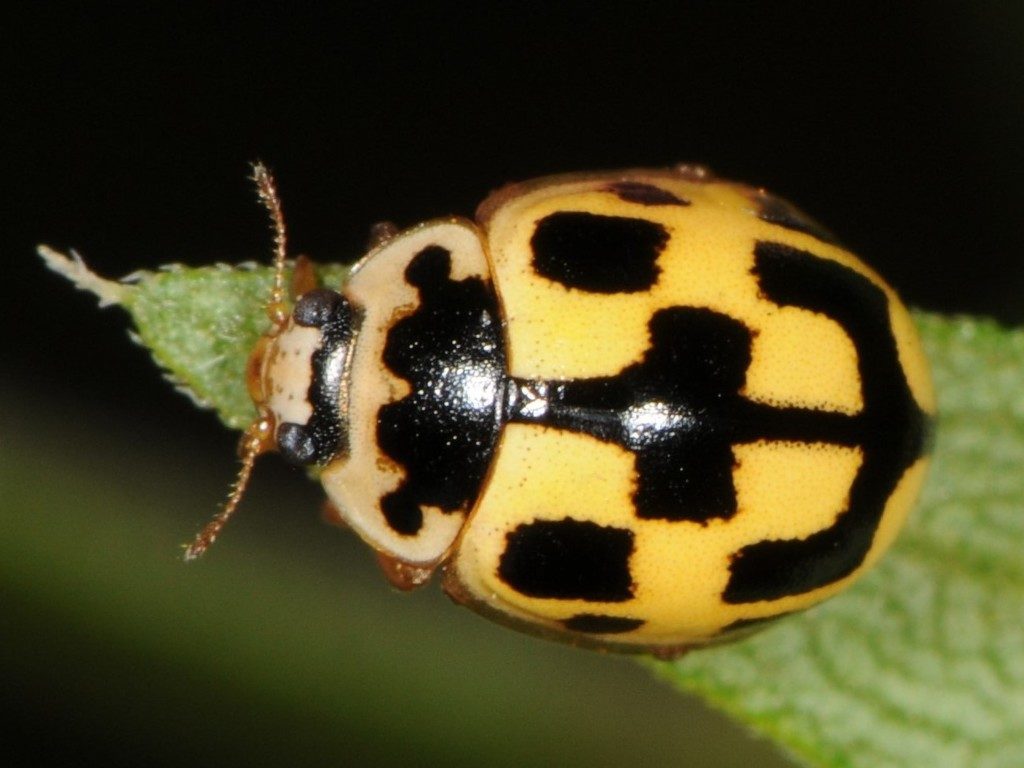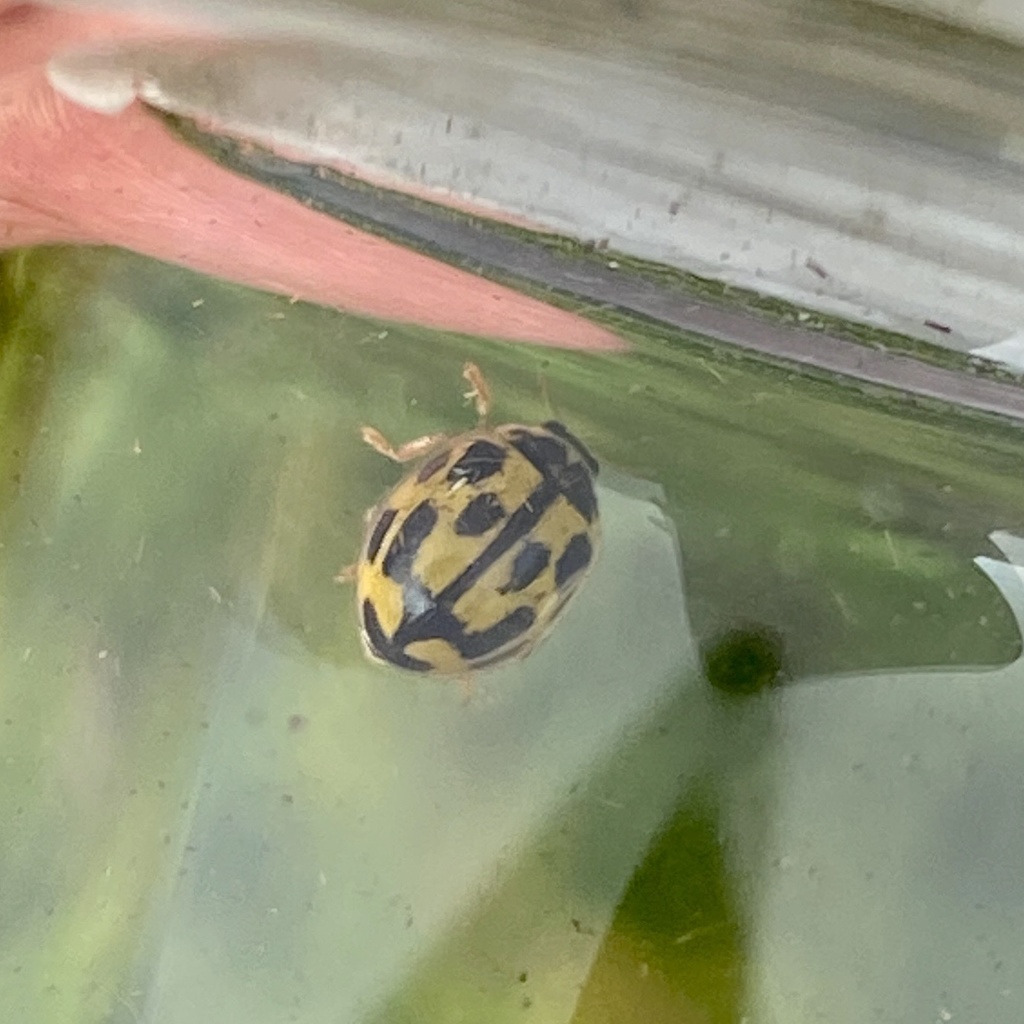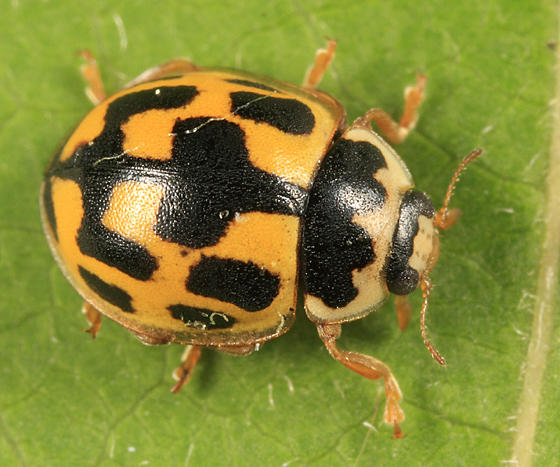
Fourteen-spotted Lady Beetle © Jason Michael Crockwell
The Fourteen-spotted Lady Beetle is native to parts of Europe, Asia, and Africa, however its North American range is rapidly spreading. They were originally introduced to the United States to help control the Russian wheat aphid (Hoebeke 2019). These small beetles come in a surprising variety of colors and patterns. Their 14 spots are almost rectangular in shape and their color ranges from cream to light orange.
Status
Introduced
Introduced to the United States and Canada.
Last Seen
2021
Fun Fact
Although Fourteen-spotted Lady Beetles are named for their fourteen spots, these spots are rarely separate. They often blend together, creating larger patterns that can resemble an anchor.
Identification
The Fourteen-spotted Lady Beetle is 2.5 to 5 mm in length,
- The head is black, with a pale central patch.
- The pronotum typically has a black central patch with a pale white to yellow-white margin. Sometimes the pronotum is entirely white to yellow-white, with dark spots (less common).
- The elytra are white-yeloow, yellow, or light orange in color. They typically have 14 black spots, which are relatively rectangular in shape. The spots are typically partially to entirely fused to each other at the corners. The mindline, where the elytra meet when closed, is black.
- Commonly confused with the Marsh Lady Beetle, Fungus-eating Ladybird, Twenty-spotted Lady Beetle, Swamp Milkweed Leaf Beetle, Asian Lady Beetle, Spotted Cucumber Beetle, and Spotted Lady Beetle.
Habitat
Fields, meadows, gardens, agricultural crops, and vacant lots. Can also be found in woodlands.
General Range
Native to Europe, Northern Africa, and Asia. Has been introduced to North America, and can be found across the United States and Canada.
Food
Primarily eats aphids. Will also consume insect and other lady beetle eggs.
Life Cycle
The Fourteen-spotted Lady Beetle is most frequently found from May to August, but can be found into the fall. After the eggs hatch, larvae typically feed for 8 to 10 days, then pupate for 4 to 5 days. Overwinters in leaf litter.
More Information
You can find more information about Fourteen-spotted Lady Beetles using the following links:
Vermont Distribution
Visit the iNaturalist Observation Map and Occurrence Records to find out where Fourteen-spotted Lady Beetles have been seen in Vermont.








